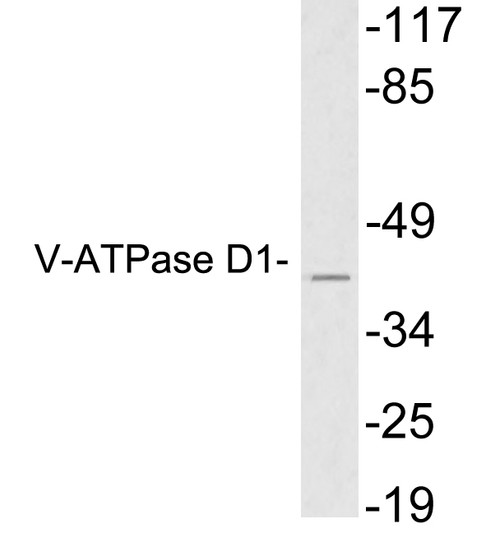| Function | Subunit of the V0 complex of vacuolar(H+)-ATPase (V-ATPase), a multisubunit enzyme composed of a peripheral complex (V1) that hydrolyzes ATP and a membrane integral complex (V0) that translocates protons. V-ATPase is responsible for acidifying and maintaining the pH of intracellular compartments and in some cell types, is targeted to the plasma membrane, where it is responsible for acidifying the extracellular environment. May play a role in coupling of proton transport and ATP hydrolysis. In aerobic conditions, involved in intracellular iron homeostasis, thus triggering the activity of Fe(2+) prolyl hydroxylase (PHD) enzymes, and leading to HIF1A hydroxylation and subsequent proteasomal degradation. May play a role in cilium biogenesis through regulation of the transport and the localization of proteins to the cilium. |
| Protein Name | V-Type Proton Atpase Subunit D 1V-Atpase Subunit D 132 Kda Accessory ProteinV-Atpase 40 Kda Accessory ProteinV-Atpase Ac39 SubunitP39Vacuolar Proton Pump Subunit D 1 |
| Database Links | Reactome: R-HSA-1222556Reactome: R-HSA-381038Reactome: R-HSA-77387Reactome: R-HSA-917977Reactome: R-HSA-9639288Reactome: R-HSA-983712Reactome: R-HSA-9857377 |
| Cellular Localisation | MembranePeripheral Membrane ProteinCytoplasmic SideLysosome MembraneCytoplasmic VesicleClathrin-Coated Vesicle MembraneLocalizes To Centrosome And The Base Of The Cilium |
| Alternative Antibody Names | Anti-V-Type Proton Atpase Subunit D 1 antibodyAnti-V-Atpase Subunit D 1 antibodyAnti-32 Kda Accessory Protein antibodyAnti-V-Atpase 40 Kda Accessory Protein antibodyAnti-V-Atpase Ac39 Subunit antibodyAnti-P39 antibodyAnti-Vacuolar Proton Pump Subunit D 1 antibodyAnti-ATP6V0D1 antibodyAnti-ATP6D antibodyAnti-VPATPD antibody |
Information sourced from Uniprot.org










